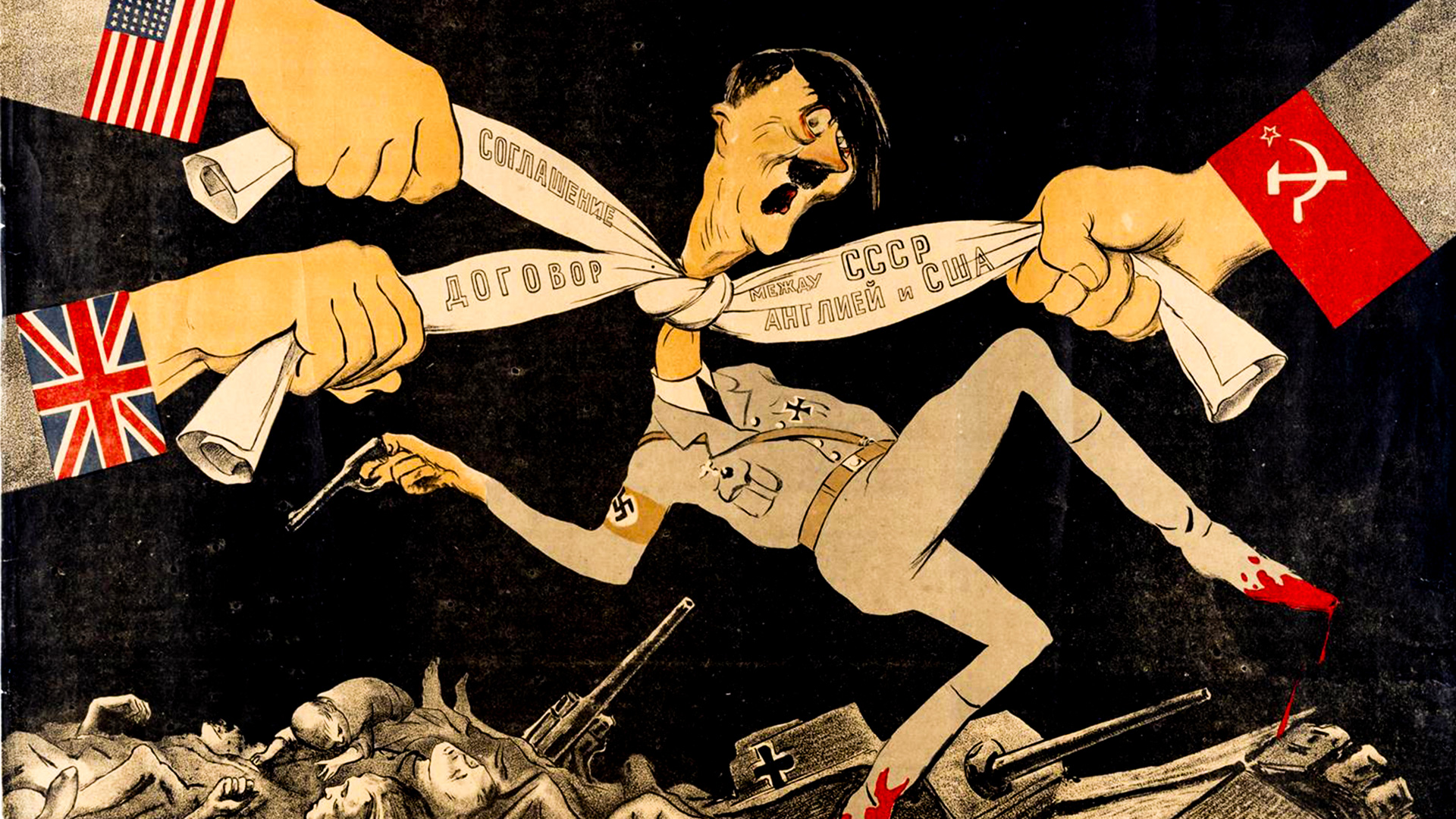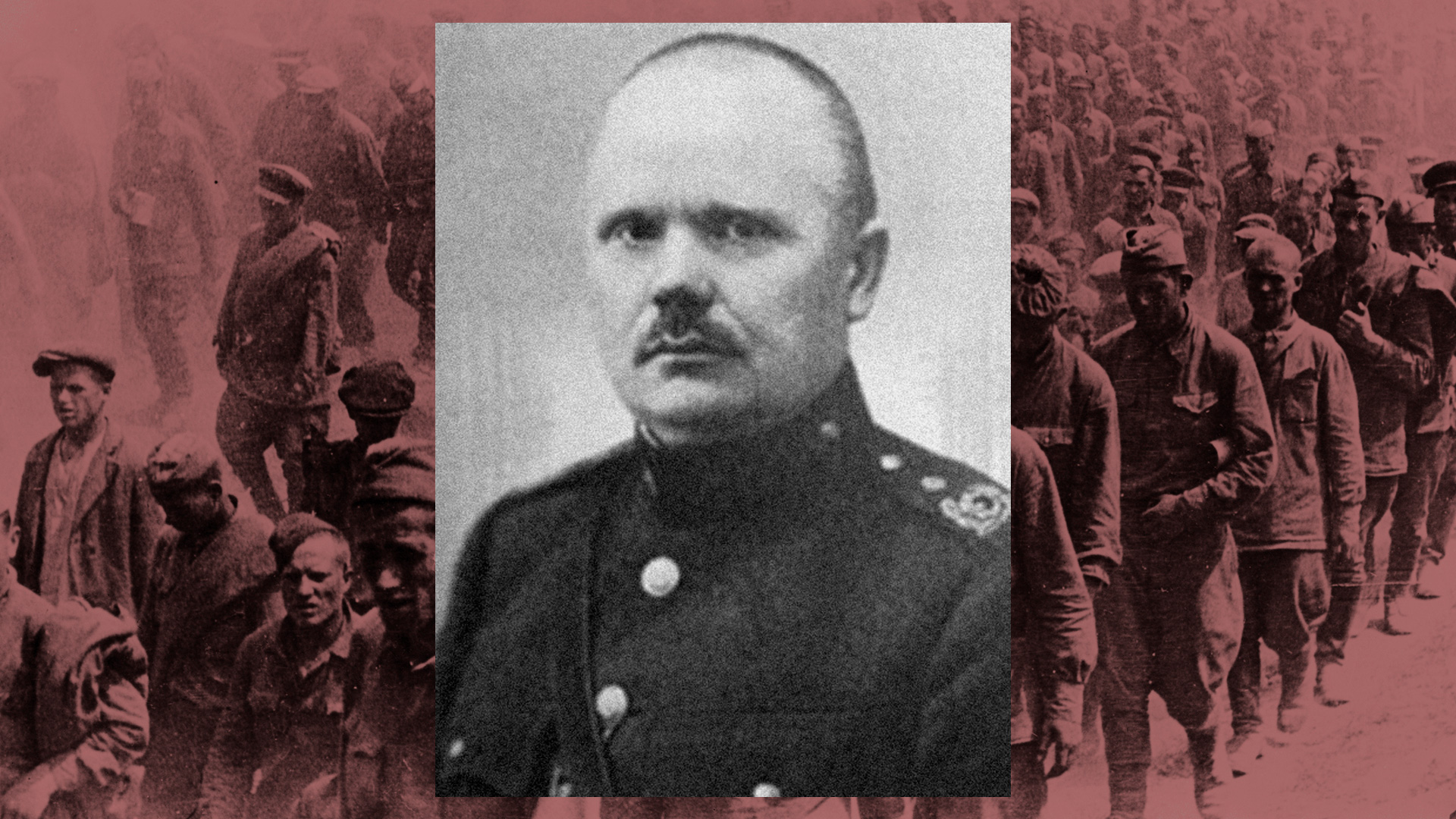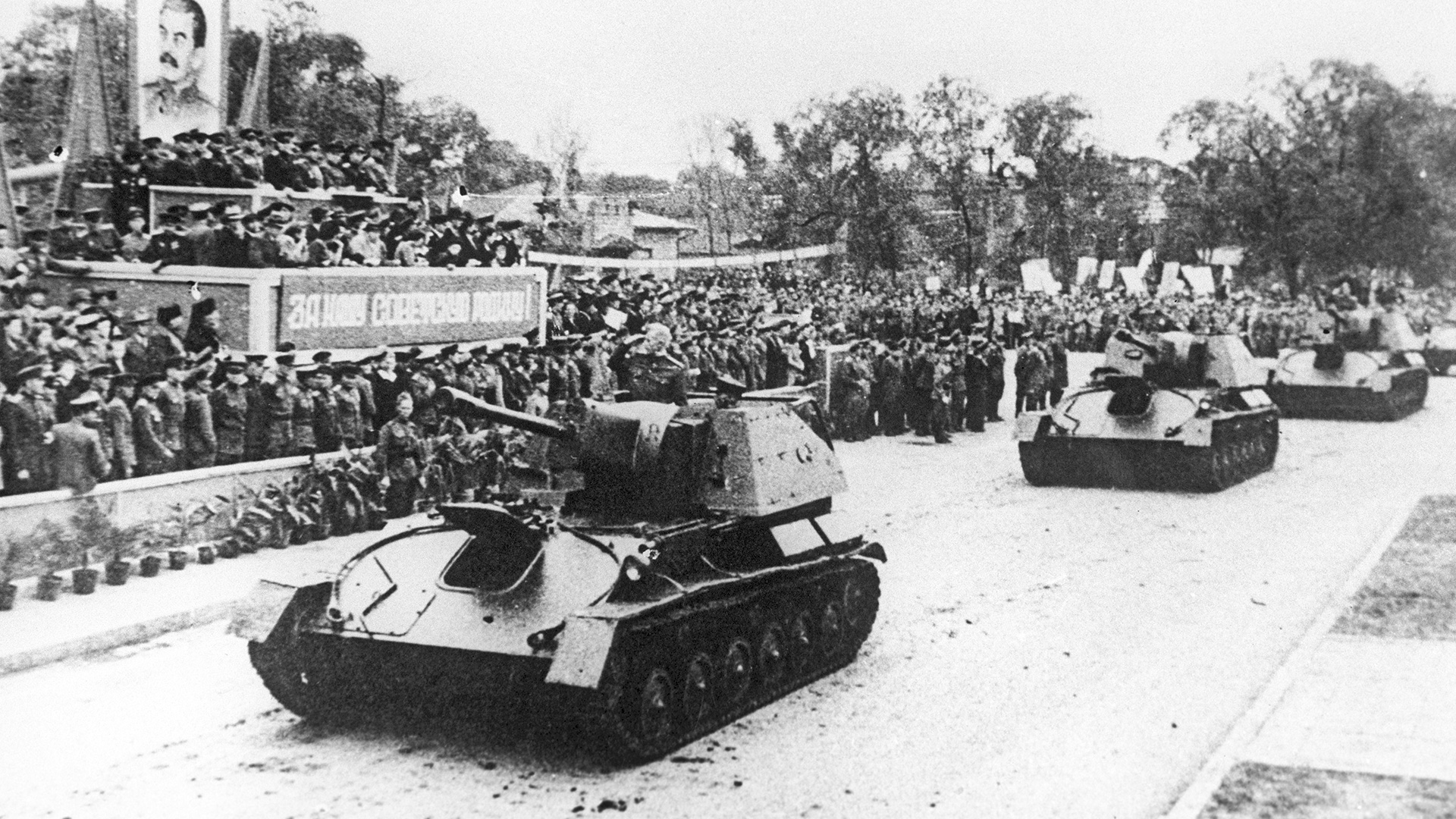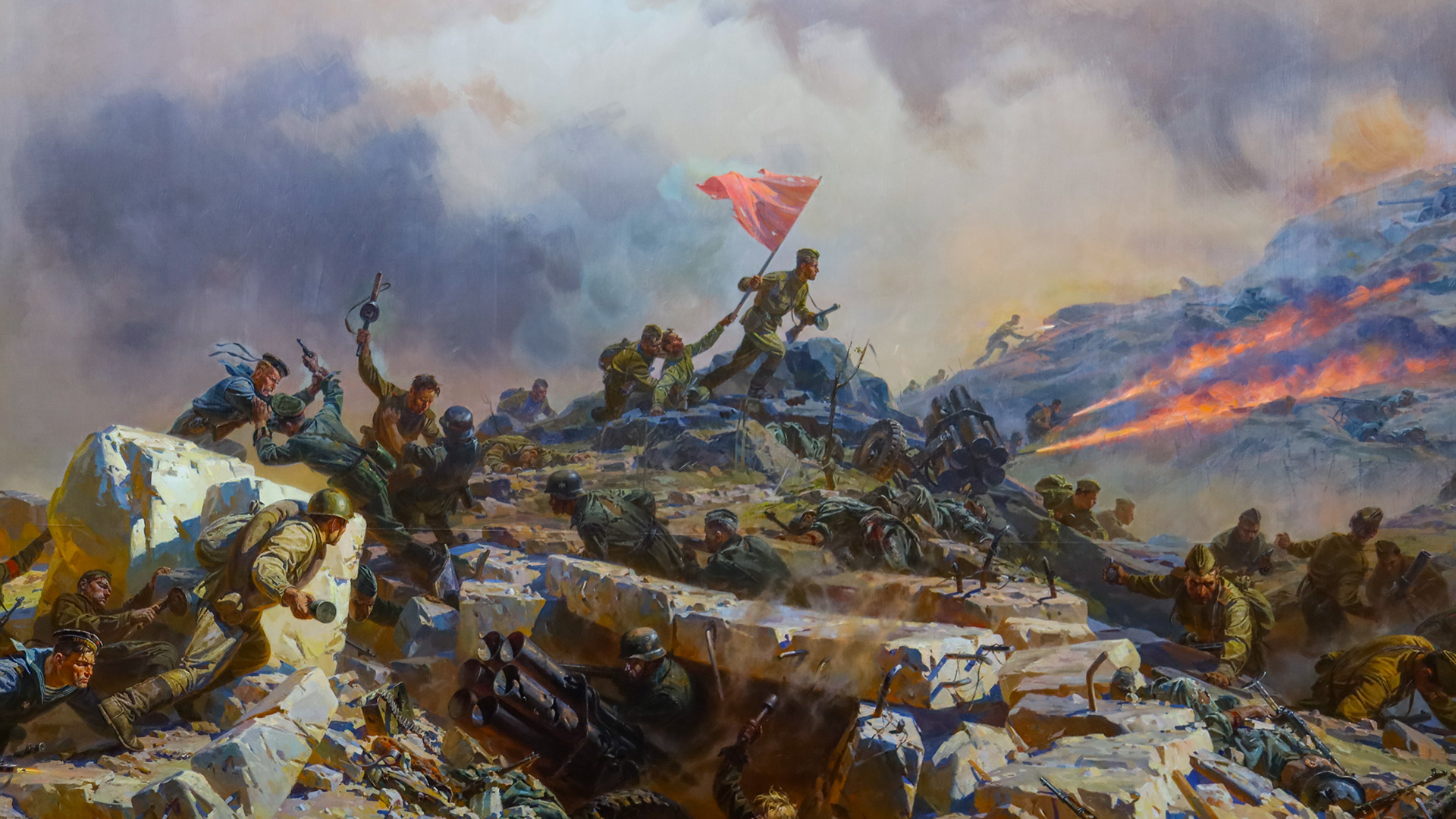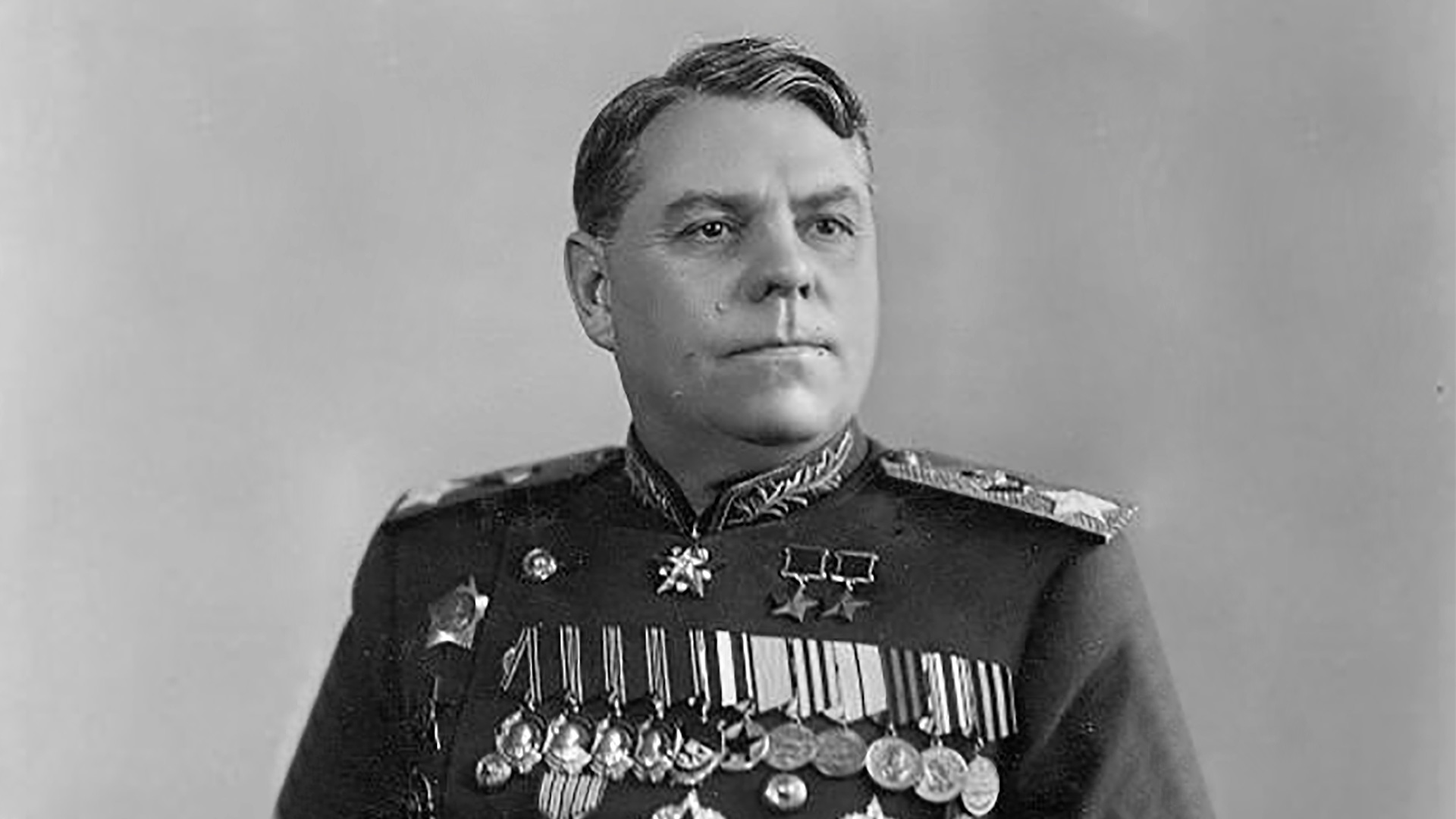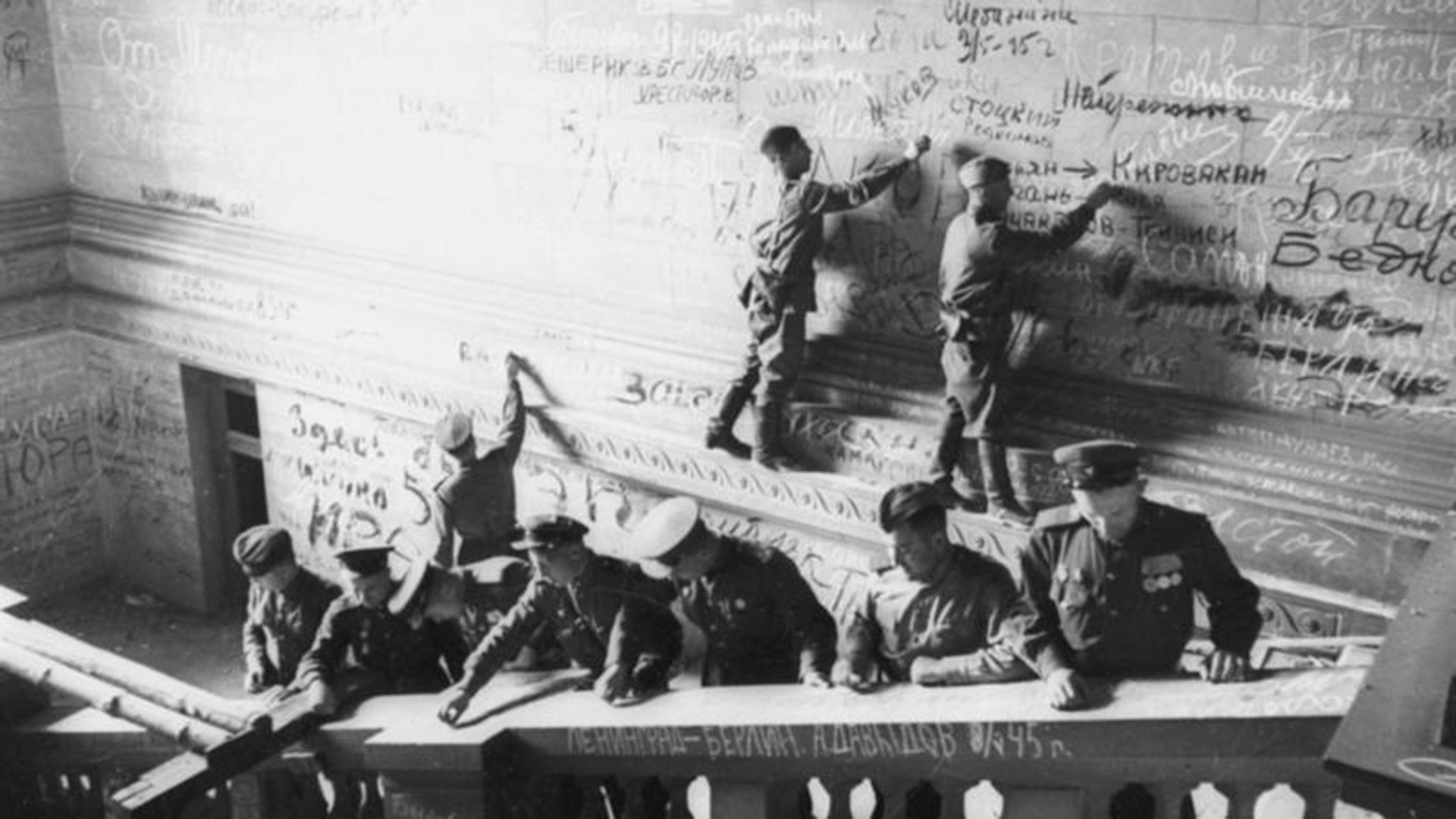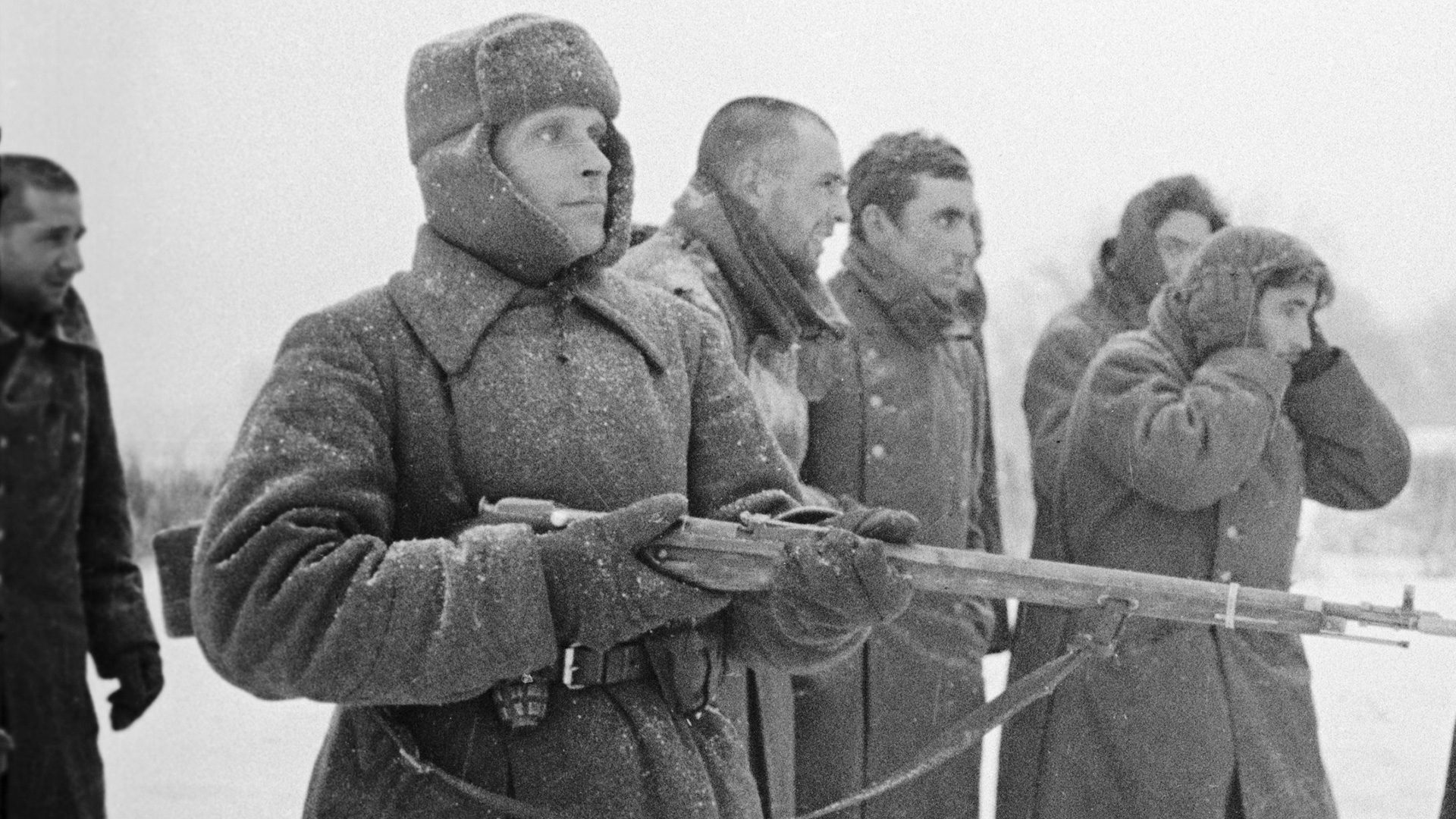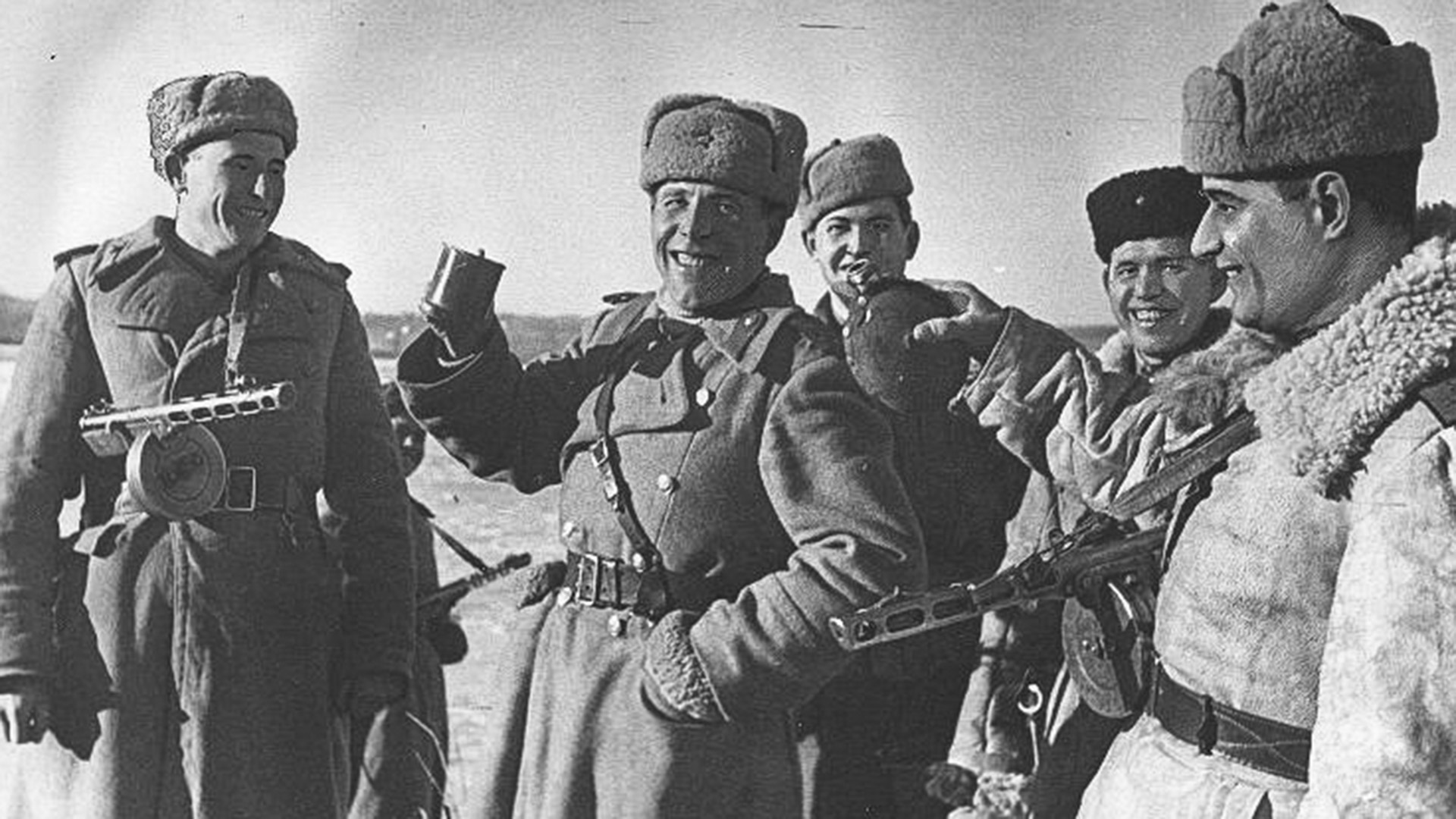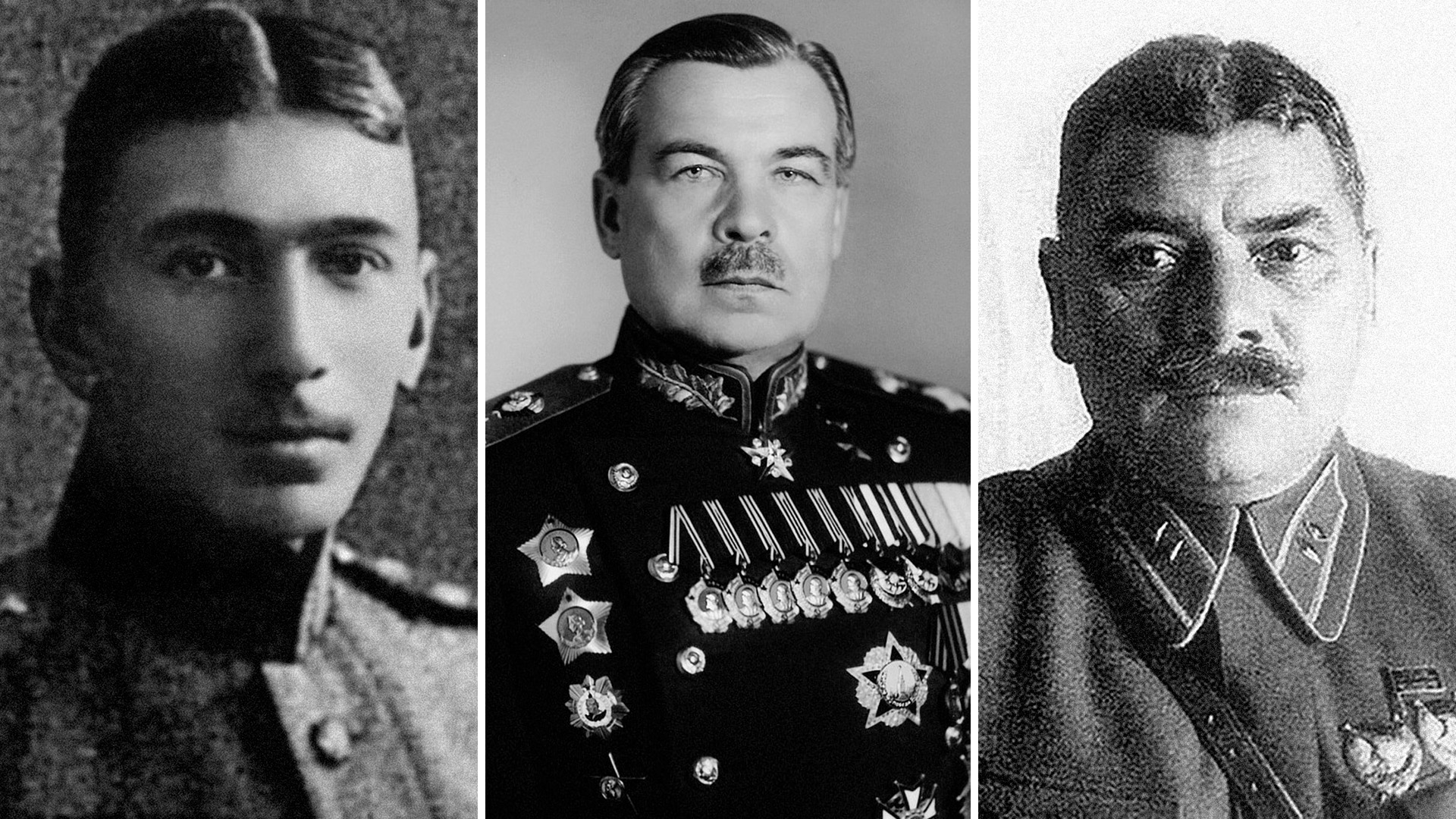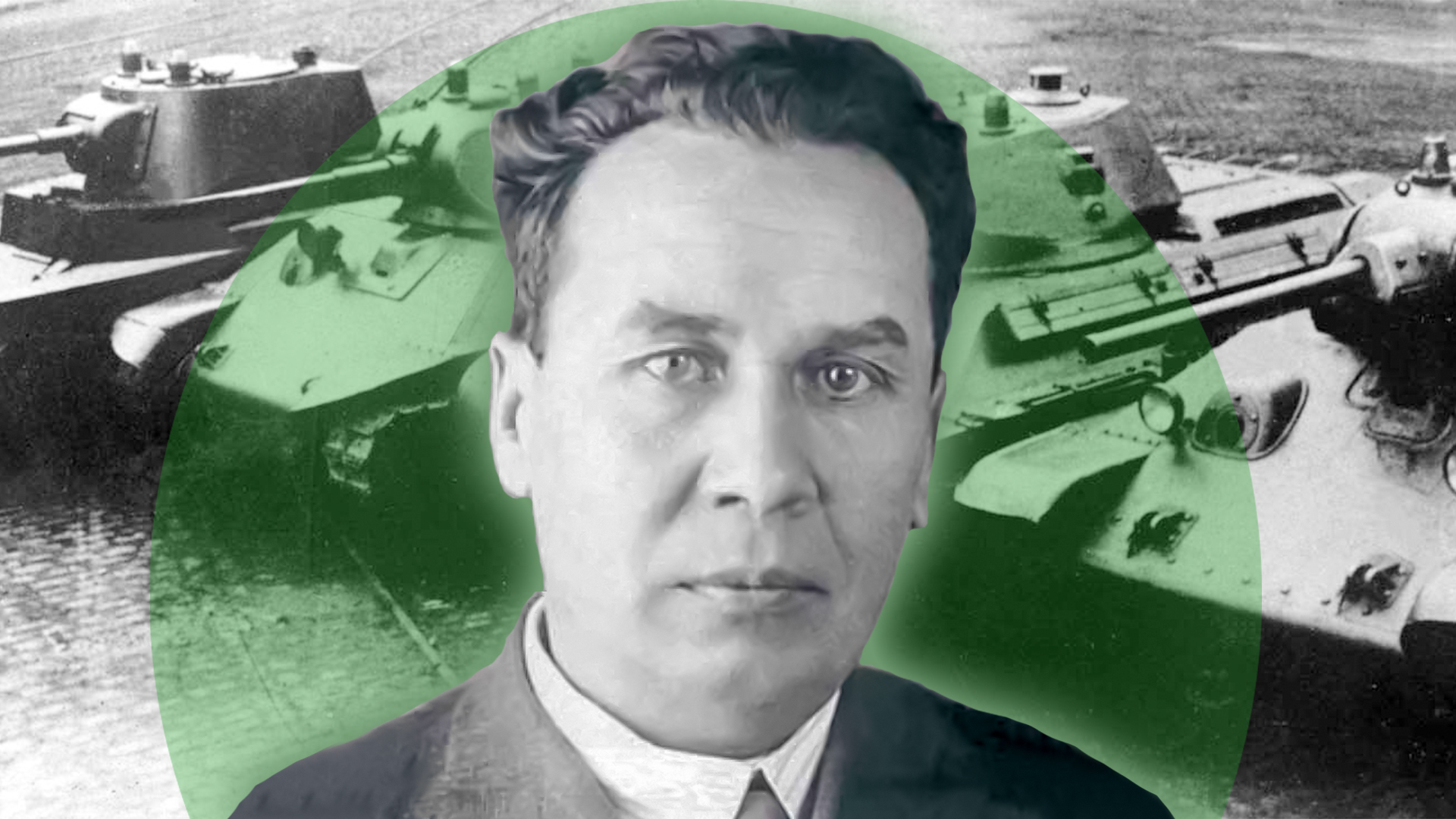
Fyodor Tolbukhin: A Tsarist officer who became a Soviet marshal

“Impeccable performance of official duty, personal courage, military talent, warm attitude towards subordinates,” is how Marshal of the Soviet Union Fyodor Ivanovich Tolbukhin, one of the best Soviet commanders of World War II, was described by his colleague Marshal Alexander Vasilevsky.
 Tolbukhin among Soviet military leaders.
Tolbukhin among Soviet military leaders.
Tolbukhin began his military career in the fields of World War I. From a simple soldier, he rose to the rank of staff captain and, for the courage and bravery he showed in battle, he was awarded the Orders of St. Anne and St. Stanislav.
 Commander of the 57th Army, Major General Fyodor Ivanovich Tolbukhin during the Battle of Stalingrad.
Commander of the 57th Army, Major General Fyodor Ivanovich Tolbukhin during the Battle of Stalingrad.
In the Civil War that broke out in Russia in 1917, Fyodor Ivanovich chose the side of the Bolsheviks. He served as chief of staff of a division and then, of an army, fought against General Nikolai Yudenich’s White Guard troops, participated in the Soviet-Polish War and in military operations against the Finns in Karelia.
 Tolbukhin speaks at a rally dedicated to the liberation of Donbass.
Tolbukhin speaks at a rally dedicated to the liberation of Donbass.
At the time of the Wehrmacht's invasion of the USSR in June 1941, Major General Tolbukhin held the post of chief of staff of the Transcaucasian Military District. He became one of the developers of ‘Operation Consent’, as a result of which Soviet and British troops took control of pro-German Iran in August-September of the same year.

In November 1941, Tolbukhin, together with Lieutenant General Dmitry Kozlov, the commander of the Transcaucasian Front, prepared a plan for a landing operation in enemy-occupied Crimea. The landing, which began on December 26, ended with the liberation of the Kerch Peninsula.
Fyodor Ivanovich took up the post of Chief of Staff of the Crimean Front, but, due to a conflict with Lev Mekhlis, the representative of the Supreme Command Headquarters, in March 1942, he had to leave it. And, two months later, the Germans defeated the Soviet forces on the peninsula and took it under their control again.
 Tolbukhin in Crimea.
Tolbukhin in Crimea.
From July 1942, Tolbukhin commanded the 57th Army, which covered the southern approaches to Stalingrad. “The 57th Army, without noise or haste, thoughtfully and in an organized manner, conducted defensive and private offensive battles and operations. We called it an army of order and organization and loved its command for its exceptionally attentive and careful attitude towards people, towards soldiers, no matter what rank they held,” recalled Lieutenant General Vasily Morozov.
Tolbukhin’s troops played a key role in the counteroffensive that began on November 19. They routed units of the 4th Romanian Army and closed the encirclement ring around the German troops in Stalingrad from the south.

During the ‘Battle of Kursk’ in the Summer of 1943, Fyodor Ivanovich led an offensive against the German ‘Muis Front’ defense line in eastern Ukraine. This made it possible to tie down significant enemy reserves and prevent the Wehrmacht command from transferring them to the area of ’Operation Citadel’ on the Kursk Bulge.

In May 1944, after a successful operation to liberate Crimea, Tolbukhin was appointed commander of the 3rd Ukrainian Front. In August of the same year, his troops, together with the forces of Rodion Malinovsky's 2nd Ukrainian Front, carried out the brilliant Jassy-Kishinev operation to encircle and defeat the ‘Southern Ukraine’ German Army Group.
The Red Army, meanwhile, completely liberated the territory of Moldova. In Romania, a coup d'état took place, as a result of which the country sided with the anti-Hitler coalition. Bulgaria soon followed suit. On September 12, 1944, Tolbukhin was awarded the rank of ‘Marshal of the Soviet Union’.

In October 1944, the troops of the 3rd Ukrainian Front under the command of Fyodor Ivanovich, together with units of the People's Liberation Army of Yugoslavia, liberated Belgrade. On February 13, 1945, Budapest was captured.
In March, in the area of Lake Balaton, German troops launched their last large-scale offensive of the war. Soviet troops withstood the onslaught, allowing the enemy to penetrate their battle lines only to a small depth and then launched a counteroffensive.
 Tolbukhin hosts parade in Bucharest.
Tolbukhin hosts parade in Bucharest.
On April 13, 1945, Tolbukhin's troops captured Vienna. In order to save the city's landmarks, the military leader ordered that heavy artillery and bomber aircraft not be used during the assault.
After the war, Fyodor Ivanovich commanded the Southern Group of Forces in Romania and Bulgaria and then the troops of the Transcaucasian Military District. In 1949, he died of diabetes.
“I will never forget,” Vasilevsky wrote, “how Fyodor, lying on a hospital bed, literally a few minutes before his death, assured [us] that he would go to work tomorrow…”



